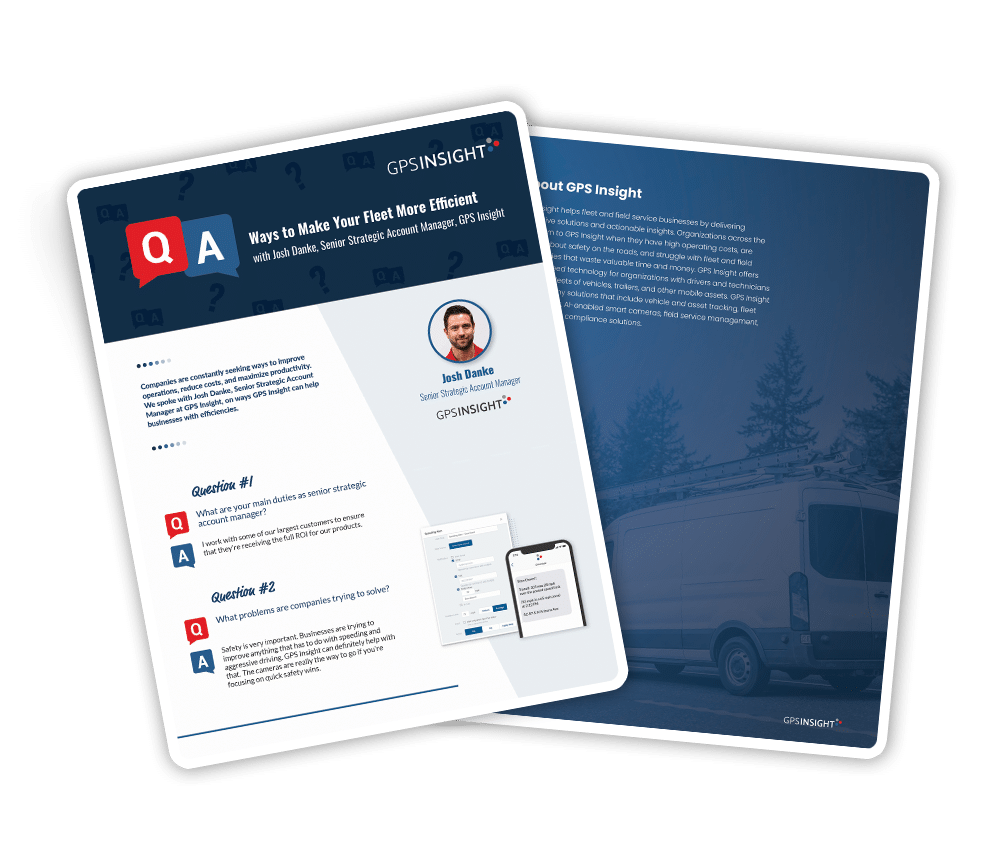
Ways to Make Your Fleet More Efficient
Q & A with Josh Danke, Senior Strategic Account Manager
Companies are constantly seeking ways to improve operations, reduce costs, and maximize productivity. We spoke with Josh Danke, Senior Strategic Account Manager at GPS Insight, on ways GPS Insight can help businesses with efficiencies.
What are your main duties as senior strategic account manager?

What problems are companies trying to solve?

How can GPS Insight help businesses be more efficient?

One area where we’ve improved efficiency is device installation. Previously, each store received devices individually. Now, we work with a smaller group of upfitters.
These upfitters receive the vehicles directly from the manufacturer (typically Isuzu box trucks and Ford Transits). They then install the box, upgrade features, and outfit the truck specifically for Aaron’s needs. Finally, they install the fleet management device.
The upfitter manages the entire process, including acquiring and paying for the device. This cost is then included in the overall vehicle price. Aaron’s then pays a separate fee for the monitoring service.
This approach simplifies the process significantly. Instead of managing device installation at 1,000 individual stores, we only need to coordinate with a handful of upfitters. (An upfitter is a person who modifies or customizes a vehicle to meet a specific purpose.)
A professional still handles the device installation and install costs are reduced due to the consolidations of installs. It eliminates all the trip fees generated by having third party installers traveling to their many locations.
What other issues are businesses working on?

So they want to look at the utilization. Our GPS devices are great at letting them know exactly how much things are being used.
How can they do that?

This way, they can address the issue at the store level. Almost every store will initially resist giving up trucks. However, when presented with hard data from the report showing a vehicle was only used for four hours last month, they can make a stronger case. This has helped them right size their fleet over the last year.
They’ve been downsizing due to the pandemic and haven’t fully recovered, resulting in a fleet reduction from 2200 vehicles to around 1850 currently.
This process of identifying underutilized vehicles is applicable to many large organizations. They all want to know what equipment is being used and what isn’t.
Even if they aren’t planning on removing vehicles or assets from service entirely, there are situations where they can be reallocated. For instance, a backhoe assigned to one job site might be more suitable for another ongoing project. The report allows them to check the utilization of such equipment. If a piece of equipment is significantly underutilized, it can be transferred to another project instead of incurring the high cost of renting additional equipment.
What other kind of reports help with efficiency?

If businesses are looking to improve their fleet efficiency, why would GPS Insight be the choice?

What’s coming in the future?







